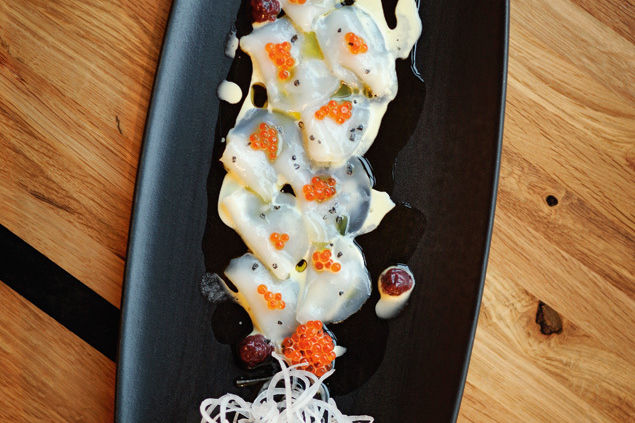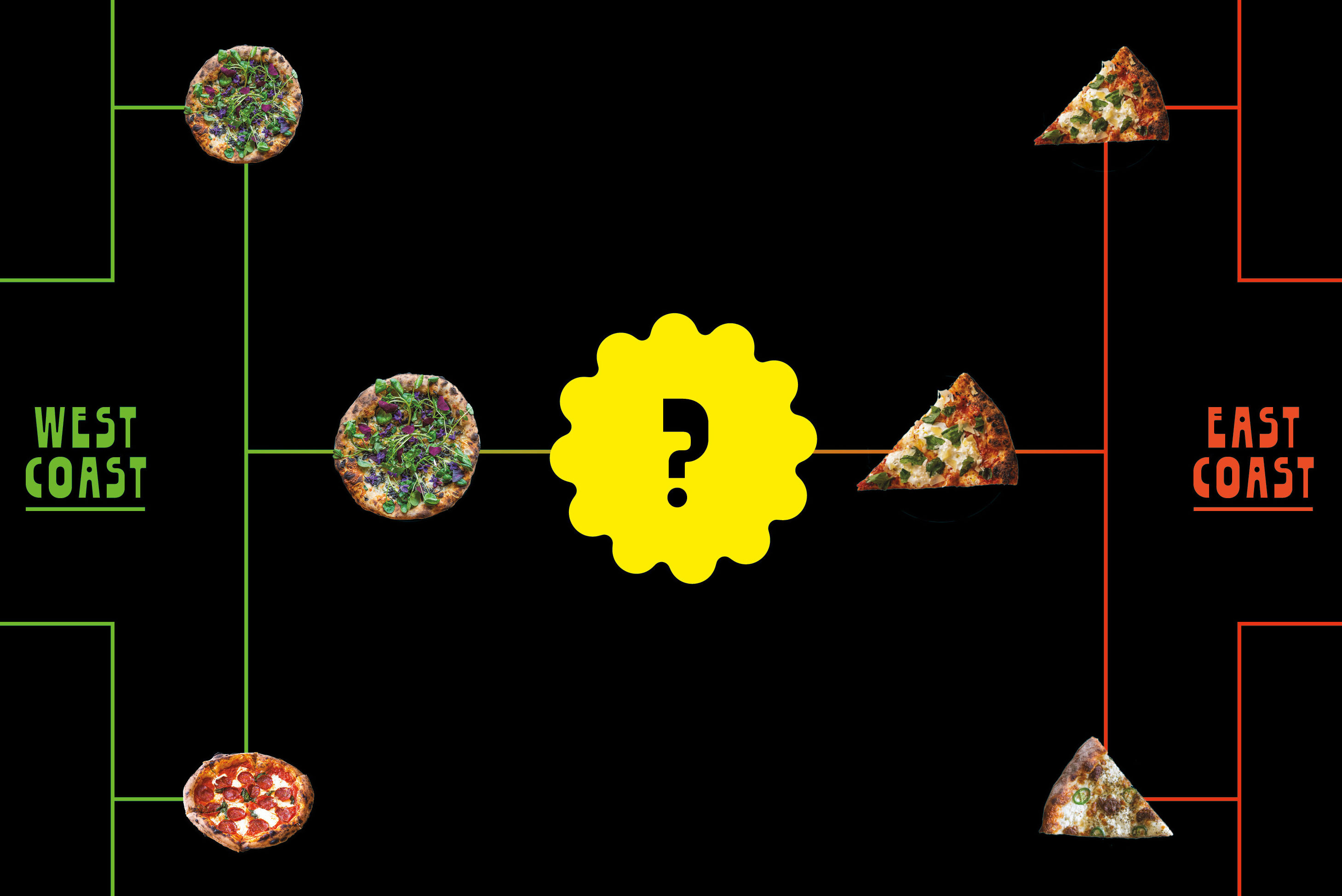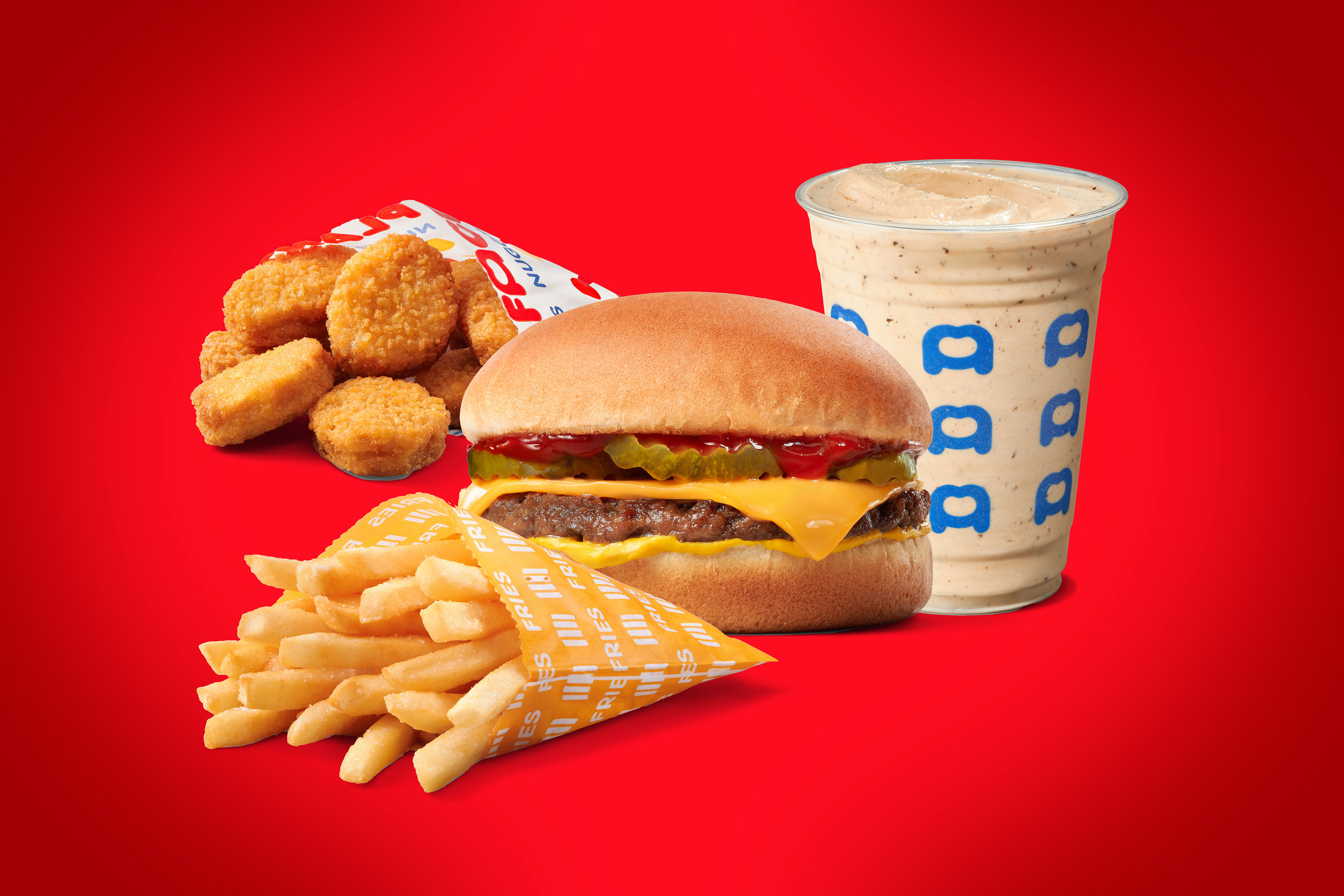Ocean's Heaven
AMONG the many ways cooks and local food entrepreneurs have polished Portland’s reputation as America’s new food frontier is by recrafting mainstream eateries. We now have a steak house without filet mignon (Laurelhurst Market), a fast-food joint free of cartoon mascots and chicken strips (Little Big Burger), and a sports bar that plays a spinach salad with chanterelles over nachos (Spirit of 77). But despite proximity to two rivers and an ocean, Portland notably lacks a new vision for seafood. When is the last time a restaurant pushed hard beyond crab cakes, ahi tuna “served rare,” or oysters on the half shell?
Meanwhile, the state ships 80 to 90 percent of its catch elsewhere: Japan, alone, swallows 80 percent of Oregon black cod, plus most of our sardines.
Fin, a new-wave fish house on SE Hawthorne Boulevard, may be the first lap of a turning tide. Last summer chef Trent Pierce swam in from, of all places, Foster Burger to lead this new venture in the former Sel Gris space owned by Joan Dumas, in her second run as a restaurant financier. A self-taught seafood cook, Pierce has clearly studied the artistic menus of New York’s Le Bernadin and Chicago’s L2O. (If you’re going to learn, might as well go to the best.) But he has his own game, too, playing with fish in unconventional ways, stealing ideas from charcuterie, and honing a head-to-fin philosophy that uses every scrap in sea-gamy stocks and seafood sausages, all delivered with the beauty of a still life.
That he’s going his own way is clear from the first bite of Hawaiian butterfish. That it lives up to its name (buttery) is the least of it. The whole production is immersed in forest-pungent porcini dust, then dunked brazenly in a glaze of butter and bone marrow drippings. Even the color (coal-miner’s black) signals a new day for anyone still thinking about cedar-planked salmon. And that doesn’t count the deep chew of roasted wild mushrooms or the sweet punch of homemade shallot marmalade coasting along the edges. Seafood rarely offers the surprise of beef fat, the essence of earth. But in Pierce’s hands, a piece of butterfish is no longer a product of the ocean, but a taste of land and cow and richness and bold thinking.
The menu divides into “Cold” ($10–15) and “Cooked” ($8–28) categories, based on the fresh catch from the sustainably minded Hawaiian Seafood Company, the restaurant’s main source. In breaking with old-school, large-scale seafood restaurants like Jake’s, Fin banishes the obvious, the iconic, the preconceived. No salmon, no lemon wedges, no bibs. Besides the butterfish, Pierce hopes to hook us on the likes of barracuda and blue snapper—and so far, he’s doing a pretty convincing job.
To experience Fin’s delicate side, start with a couple of raw dishes, perhaps a ceviche with Thai chiles and ginger or an unexpected fish tartare with seasonal notes drawn from local markets. Snag an order of “carpaccio,” a thinly pounded carpet of raw tuna elevated with an understated nudge of white soy, ponzu and yuzu so balanced it could impress a Japanese grandmother. Spicy octopus arrives in three heady one-bite bundles—wrappers of delicate white ono sashimi hiding bright mint and citrus-scented octopus meat poached into tender submission. If food can be poetry, this is it.
Butterfish is Pierce’s favorite freestyle dish. His riff with the bone-marrow butter is just one turn in a kit of moves that might include a shake-and-bake of cocoa and orange zest or a top sheet of green curry coconut milk gel. Whatever the night’s variation, just order it.
Grilled radicchio salad, a rare dish without fish, is a pure delight—barely warm, crunchy and creamy, and booby-trapped with bits of super-tart lemon confit that can make you wince with joy. I’d happily return for a beer and “snapper in a hot stone bowl,” inspired by bibimbap, the stir-your-own Korean comfort dish. Fin’s version includes the traditional egg yolk and crispy hot rice but upgrades the extras with pork cheeks, wild mushrooms, and black kale. A big squiggle of raw fish perches along the rim, begging for attention. Since no instruction manual is included, eat it raw or plunge it into the hot mass and watch it cook, instantly.
Not all of the experiments work. The Seafood Bolognese, with squid-ink pasta and toasted nori, is a lovely idea but meek as a goldfish. Striped marlin and lardo (a.k.a. pure pork fat) is a romance best left in the kitchen. The chocolate s’more with runny miso caramel and marshmallow fluff could have been dreamt up by your little brother. In general, the desserts are odd, klutzy, and way too sweet. As Clint Eastwood once said, “A man’s got to know his limitations.” There’s no shame in outsourcing.
But these are easy fixes. More challenging for the kitchen is figuring out how to pace meals so entrées don’t arrive willy-nilly. Meanwhile, the ingredients need some breathing room: the supporting cast here seems straight out of Groundhog Day—you keep waking up to the same yuzu, mushrooms, and microgreens over and over.
For all the imagination, Fin sends too many mixed messages. Bread and butter arrive with four flavors of salt (that’s right, four) while arena rock pounds the restaurant’s dentist’s-office décor.
Are we supposed to savor serious food or play air guitar to Journey?
Pierce is trying something difficult: to keep fish fresh, literally and figuratively, a dozen different ways every night. He’s curing ideas for the future. I can’t wait to see what “tuna prosciutto” and “amberjack bacon” might actually be.
For now, he’s luring us with his passion—and promise. He could be Portland’s first bold wave of seafood reinvention … or just a ripple.




